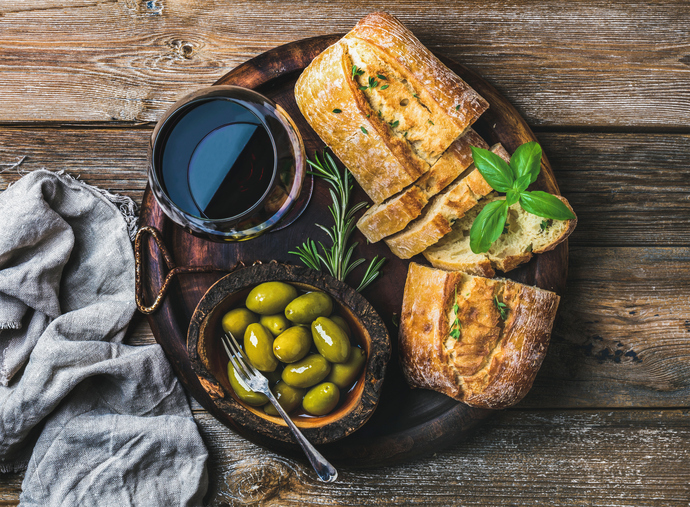In Vino Veritas LXVI: Olives And Other Accompaniments
There’s a short expression in Italian I’m fond of written simply as, ‘L’ambiente del vino’. The direct translation is ‘the ambiance of wine’ but really it means so much more.
We are, after all, emotional beings and no experience occurs in a vacuum. As such, the taste and enjoyment of a particular glass of wine is not only influenced by the blend of various grape varietals and the liquid’s color or smell but also the glass it’s served in, the bottle it’s poured from, the table setting, the company you keep, the setting in which it’s enjoyed and, of course, the food it’s paired with.
While every hotelier understands the basic principle of food and wine pairings, I’ve seldom seen anyone aside from executive chefs, sommeliers and F&B directors who wholly embrace the potential for one to augment the other and help to drive meal satisfaction as well as incremental purchases. Maybe that’s why these individuals reach the top of the ladder, but nevertheless it’s our job as senior managers to pay that knowledge and passion forward to the entire team so they can in turn communicate that to your patrons.
I’ll leave the actual meal pairings to your diligent culinary team as these require a much more substantial conversation (and indeed, many lengthy books have been written on the matter). For now, let’s focus on snacks – or in more sophisticated terms, ‘meal accompaniments’ – and how they might influence a guest’s overall satisfaction with their beverage selection and perhaps entice them to try something that’s a tad pricier.
I specifically reference olives because, aside from cheese, they are the most traditional nosh to accompany an aperitivo and also because our current society is on the cusp of understanding, just like wine, how diverse olives truly are. If you think in terms of the overall ambiance with which you present your liquor selection, would you present any old bowl of olives, or would you opt to offer your customers a platter with their choice of three different cultivars such as kalamata, niçoise or manzanilla?
Simply including the named modifier or place of origin in the description (either on the menu or communicated verbally) might be enough to convince many patrons of the food’s greater quality, thus substantiating a higher price point.
Similarly, the same applies to nearly any other snack you might serve. Ask any chef or foodie – an olive is never just an olive; a tomato is never just a tomato; a cracker is never just a cracker. Over the past year, I’ve noted the proliferation of elaborate classifications on menus for cured meats, vegetables, fruits, nuts, legumes, honeys, sauces and just about any other edible material you can put in your mouth.
The lesson here is that we now live in an era of endless food localization as well as specialization. As such, you must be conscious of where you source every ingredient your kitchen uses while also looking for subtle points of differentiation that may already exist within any given food category. And with any luck, guests will enjoy your heightened ‘sense of specificity’, thereby rewarding you with their patronage and increased alcohol sales per turn. Start with olives and then see what happens.




